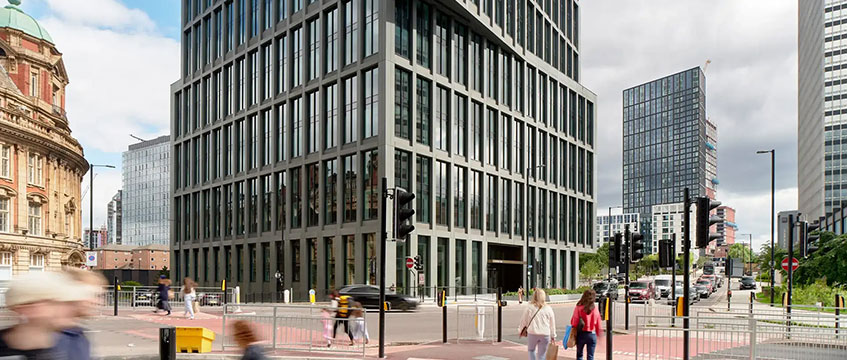Office leasing soars in regional cities
Office leasing across the UK’s big six regional cities totalled 1.3m sq ft in Q3 2024, as activity rebounded to its highest level since the end of 2022, according to JLL.
The Big Six research, which tracks office take-up, vacancy rates and grade-A rental growth across Birmingham, Bristol, Edinburgh, Glasgow, Leeds and Manchester, showed annual leasing had reached 3.3m sq ft by the end of the third quarter, 24% ahead of the same point last year.
JLL expects the total amount of space leased across the whole of 2024 will exceed the five-year average of 4m sq ft, which would represent an increase of at least 8% on 2023. These figures also represent strong momentum for each of the big six office markets going into 2025.
Office leasing across the UK’s big six regional cities totalled 1.3m sq ft in Q3 2024, as activity rebounded to its highest level since the end of 2022, according to JLL.
The Big Six research, which tracks office take-up, vacancy rates and grade-A rental growth across Birmingham, Bristol, Edinburgh, Glasgow, Leeds and Manchester, showed annual leasing had reached 3.3m sq ft by the end of the third quarter, 24% ahead of the same point last year.
JLL expects the total amount of space leased across the whole of 2024 will exceed the five-year average of 4m sq ft, which would represent an increase of at least 8% on 2023. These figures also represent strong momentum for each of the big six office markets going into 2025.
Activity was boosted by significant deals in Birmingham, which saw an increase of more than 100% on the previous quarter, and Manchester, where the largest deal of the year was recorded with Bank of New York Mellon leasing nearly 200,000 sq ft.
The surge in activity underscores a strong recovery trend across these key urban centres, with the public sector accounting for 28% and professional services with 21% driving the increase.
Increasing occupier demand for grade-A offices was also highlighted, with vacancy rates in the new-build segment steadily falling. This is particularly acute in Scotland with Edinburgh and Glasgow reporting new-build vacancy rates of 0.1% and 0.4% respectively.
The development pipeline remains constrained, with fewer speculative schemes underway as developers increasingly focus on viability issues and seeking prelets before commencing projects.
While the final quarter of this year should see the delivery of 2m sq ft of space bringing a short-term increase in supply, the long-term trend points to decreasing availability.
Jeff Pearey, head of regional office agency at JLL, said: “This year’s take-up volumes are a clear signal to the market that the UK’s regional office market remains healthy, especially for the best-in-class space, where demand remains strong.
“However, the impending supply drought means that there is likely to be tough competition for quality workspaces that fit the needs of modern occupiers. While in the short-term developers might take on more risk to bring forward refurbishments or new space without agreed prelets, in practice we expect to see prime rent levels continue to increase.
“This will be in response to both reducing supply and intense demand for more modern, sustainable buildings which align with increasingly stringent ESG objectives. The supply situation is likely to remain particularly acute as employers are making increased use of their offices with much greater certainty around hybrid working strategies prevailing.”











